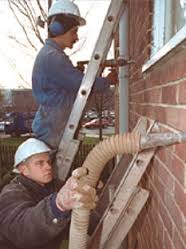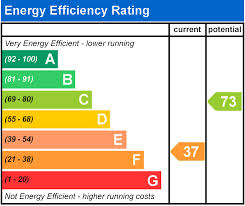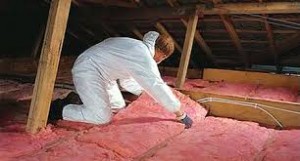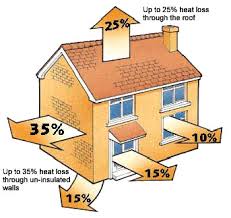Save energy this winter by getting your home insulated for FREE!
Great news for UK home owners as British Gas says “nine out of ten will be able to get loft and cavity wall insulation for free” as part of the Energy Company Obligation (ECO). No you don’t have to be on benefits, over 60, or have minimal savings to qualify!
Most of the big six energy providers are giving free boilers, plus loft and cavity wall insulation, to some people who get tax credits and have an income of £15,860 or less, or are receiving certain benefits such as pension credit. But British Gas is giving away FREE loft and cavity wall insulation to anyone with a suitable home – you don’t need to meet any benefit criteria – you don’t even have to be a British Gas customer! See British Gas Free Cavity Wall Insulation
That’s right it’s completely free – nothing to pay at all, ever! Unlike the extensively promoted Green Deal, designed to help people make energy efficiency improvements to buildings by allowing them to spread the costs through their lower energy bills over several years, rather than paying 100% in advance of energy savings.
So how can it be free?
The Energy Company Obligation (ECO) is an energy efficiency programme that was introduced in the UK in early 2013, replacing the Carbon Emissions Reduction Target (CERT) and the Community Energy Saving Programme (CESP). ECO places legal obligations on the larger energy suppliers to deliver energy efficiency measures to domestic energy users. It operates alongside the Green Deal and the big energy companies have obligations to spend money to make UK homes more energy efficient, through ECO. If they miss their targets, they face large fines. This is why it is being offered free and why British Gas has changed its criteria for free insulation to include anyone with a suitable home. Homes that are not suitable are those built using timber or steel frame as they already have insulation in the frame. Most new homes built since 2000 will already have cavity wall insulation.
Cavity wall insulation
The purpose of the cavity in cavity wall construction is to prevent the transfer of dampness to the internal wall. It is therefore important that the insulating material used to fill the cavity is moisture repellent. Cavity wall insulation should reduce the U-value of a wall (the measure of the rate it loses heat) from around 1.5 to 0.45. As around 35% of heat in a home can be lost through the external walls, cavity wall insulation one of the most easy and cost-effective ways of reducing the energy consumption of a home. Installing cavity wall insulation can cut annual fuel bills by around £250* a year for a detached house and £150* for semi-detached. The total score in an Energy Performance Certificate will be increased by around 12 points after installing cavity insulation, normally sufficient to push the rating into a higher band, making your home more attractive to buyers when it is time to sell. Even if you are one of the unlucky few and do have to pay, between £475 and £750 depending on the size of your home, you should recoup your outlay in around 3 years at current prices. * Source: Energy saving trust
To qualify for FREE insulation, the first step is to ask British Gas or one of the energy suppliers to arrange an initial survey to be carried out by their installer, which is done at no cost or obligation to the homeowner. The purpose of this is to obtain basic information necessary to carry out the insulation treatment. During the next stage a Domestic Energy Assessor will carry out a more detailed energy survey. This will determine how much carbon will be saved by installing cavity wall insulation (and perhaps loft insulation). Once the carbon score for the property has been calculated and confirmation of qualification for free installation under ECO confirmed, a date for installation can be arranged with the contractor.
 To insulate your cavity walls, an installer normally drills small holes around 22mm in diameter at intervals in the outside wall of your home. Be aware this can be very noisy both outside and particularly inside the home! With specialist equipment, they then blow the insulation fibre clusters into the cavity. When the cavity is filled the holes in the brickwork are filled with mortar so you’ll barely notice them. The job usually takes around two hours for an average house with easily accessible walls; it should be relatively simple and quick – and make no mess inside the home, although outside there will be quite a bit of brick and mortar dust generated and some insulation material caused by blow back once the wall section has been filled may escape too. Check that the installation is covered by the Cavity Insulation Guarantee Agency (CIGA): this means it complies with British Standards and has a 25-year guarantee.
To insulate your cavity walls, an installer normally drills small holes around 22mm in diameter at intervals in the outside wall of your home. Be aware this can be very noisy both outside and particularly inside the home! With specialist equipment, they then blow the insulation fibre clusters into the cavity. When the cavity is filled the holes in the brickwork are filled with mortar so you’ll barely notice them. The job usually takes around two hours for an average house with easily accessible walls; it should be relatively simple and quick – and make no mess inside the home, although outside there will be quite a bit of brick and mortar dust generated and some insulation material caused by blow back once the wall section has been filled may escape too. Check that the installation is covered by the Cavity Insulation Guarantee Agency (CIGA): this means it complies with British Standards and has a 25-year guarantee.
Energy performance rating
 The EPC ratings range from the highest A rating which is only attainable for homes with near zero energy costs, to G for homes with little, ineffective or no insulation. The UK average EPC rating is D or E, but with loft and cavity wall insulation a rating of C should be attainable for most homes built since 1960. Further improvements can be made such as adding floor insulation (all but impossible with existing homes) 2 points; low energy light bulbs throughout -2 points and 3 points for a condensing boiler, although this is cost prohibitive at around £3,000!
The EPC ratings range from the highest A rating which is only attainable for homes with near zero energy costs, to G for homes with little, ineffective or no insulation. The UK average EPC rating is D or E, but with loft and cavity wall insulation a rating of C should be attainable for most homes built since 1960. Further improvements can be made such as adding floor insulation (all but impossible with existing homes) 2 points; low energy light bulbs throughout -2 points and 3 points for a condensing boiler, although this is cost prohibitive at around £3,000!
Solar panels can cost more than £7,000 and take more than a decade to pay back the initial cost of installation, with 16 panels on a roof giving a return of £750 a year. Installing solar panels would probably also be necessary to get enough points to get into energy rating band B. An average home improving the Energy Performance Rating by two bands say from E to C is estimated to add more than £16,000 to the sale price according to the Department of Energy and Climate Change.
Loft Insulation
 As heat rises it will eventually go through ceilings and out through the roof. Around 25% of heat escapes through the roof of a home. Loft insulation creates a barrier that keeps this heat in your home. The insulating material should be laid both between and across the wooden truss ceiling joists directly above the ceiling. A mineral fibre quilt is the most frequently used; sold in rolls and normally laid to give an overall total standard thickness of 250mm. Cost from £75 for DIY to £200 installed by a contractor. Annual savings around £150*. * Source: Energy saving trust
As heat rises it will eventually go through ceilings and out through the roof. Around 25% of heat escapes through the roof of a home. Loft insulation creates a barrier that keeps this heat in your home. The insulating material should be laid both between and across the wooden truss ceiling joists directly above the ceiling. A mineral fibre quilt is the most frequently used; sold in rolls and normally laid to give an overall total standard thickness of 250mm. Cost from £75 for DIY to £200 installed by a contractor. Annual savings around £150*. * Source: Energy saving trust
Other low-cost energy saving improvements you should also carry out:
Draught proofing – Windows and doors are amongst the biggest heat loss culprits in your home accounting for up to 15% of heat lost, so draught proofing any gaps in these areas should be a priority, especially as it is one of the cheapest and easiest energy saving measures to do. Cost from £50 DIY installed and can save around £40 a year.
Tanks & Pipes – Do not forget your hot water cylinder should be insulated to reduce heat loss too costing around £10 but saving around 20% on hot water heating costs. In addition cold water tanks and pipes should also be insulated for protection from frost damage if the loft floor has been insulated.






